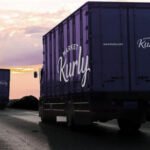A floating production storage and offloading (FPSO) vessel under construction in Singapore and owned by SK E&S will be used for the Barossa gas project in Australia
SINGAPORE – At Seatrium Admiralty Yard on Jurong Island, southwest of Singapore, some 2,000 workers were busy welding gas pipes and doing other construction work on a ship the size of three football fields combined.
The massive ship, 64 meters wide and 360 meters long and nicknamed the “floating gas production factory,” is scheduled for completion by the end of the first quarter of next year.
Officially called a floating production storage and offloading (FPSO) vessel, the ship is responsible for extracting natural gas from the seabed and transferring it to land.
One of the owners of this ship – the largest of its kind in the world – is SK E&S Co., the natural gas business unit of South Korea’s SK Group.
According to SK E&S, the FPSO vessel will be used to extract 3.5 million tons of natural gas annually 260 meters deep underwater from the Barossa gas field off Australia’s Northern Territory.
SK’s floating production storage and offloading (FPSO) vessel under construction in Singapore
The depth of the sea where the Barossa gas field is located requires an FPSO facility that can withstand strong water pressure and waves to extract gas. No other alternatives are available, says an SK E&S official.
The Korean company has spent over 2 trillion won ($1.5billion) building the FPSO ship since 2021
SK E&S aims to begin producing natural gas from the gas field by the third quarter of next year after a two-month trial run of the FPSO vessel.
STABLE GAS PROCUREMENT
SK E&S embarked on this costly overseas gas field development project to ensure a stable gas procurement and supply.
Although the company brings 5 million tons a year of LNG to Korea out of the 9 million tons that the country imports annually, it is always challenging to secure a stable supply via long-term contracts.
SK E&S is Korea’s largest city gas supplier
As Korea’s top city gas supplier, SK E&S has been trying to meet growing liquefied natural gas (LNG) demand in Korea.
SK E&S has mainly purchased LNG from the Tangguh gas field in Indonesia and North American shale gas reserves.
Its contract with Indonesia, however, will expire in 2026, prompting the company to set out to secure its own gas fields.
In 2012, SK E&S decided to join the Barossa gas field project.
With US energy companies Shell and ConocoPhillips confirming enough gas deposits through evaluations, the Barossa gas project was a “sure thing.”
SK E&S joined the project by covering the evaluation costs of the gas field in 2014. SK later formed a consortium with Australian energy firm Santos Ltd. and Japan’s JERA Co. to jointly develop and own the project.
The Barossa offshore project (Courtesy of ConocoPhilips Australia Exploration)
Holding a 37.5% stake in the project, SK E&S is now the second-largest shareholder of the project after Santos, which owns a 50% stake. SK has invested $4.3 billion in total.
The Barossa gas field is estimated to hold 70 million tons of natural gas. SK E&S plans to bring to Korea 1.3 million tons a year of natural gas out of the planned annual extraction volume of 3.5 million tons.
The imported gas will be used to produce clean hydrogen or in LNG power plants.
VALUE CHAIN FROM GAS PRODUCTION TO CARBON CAPTURE
In addition to acquiring a stake in the Barossa gas field, SK E&S has taken further steps to improve cost competitiveness.
The Bayu-Undan Gas Field (Courtesy of SK E&S)
In 2021, the company acquired a 25% stake in the nearby Darwin LNG plant for $390 million to liquefy the natural gas extracted from Barossa and capture carbon emissions.
In addition to the Barossa project, SK also took part in a carbon capture and storage (CCS) project at the Bayu-Undan gas field, located south of East Timor. The two projects provide SK with a value chain from gas production to liquefaction, carbon capture and storage, and cogeneration.
“SK E&S is directly involved in projects such as gas field development, LNG plant operation and CCS, its business costs will go down significantly, leading to an increase in annual operating profits,” said an industry official.
SK E&S is in the middle of merging with SK Innovation Co., an energy unit of SK Group to cut costs and improve business synergy.
From the Barossa gas field, SK E&S plans to supply condensate, a naphtha raw material, to SK Innovation.
By Hyeon-woo Oh
ohw@hankyung.com
In-Soo Nam edited this article.











